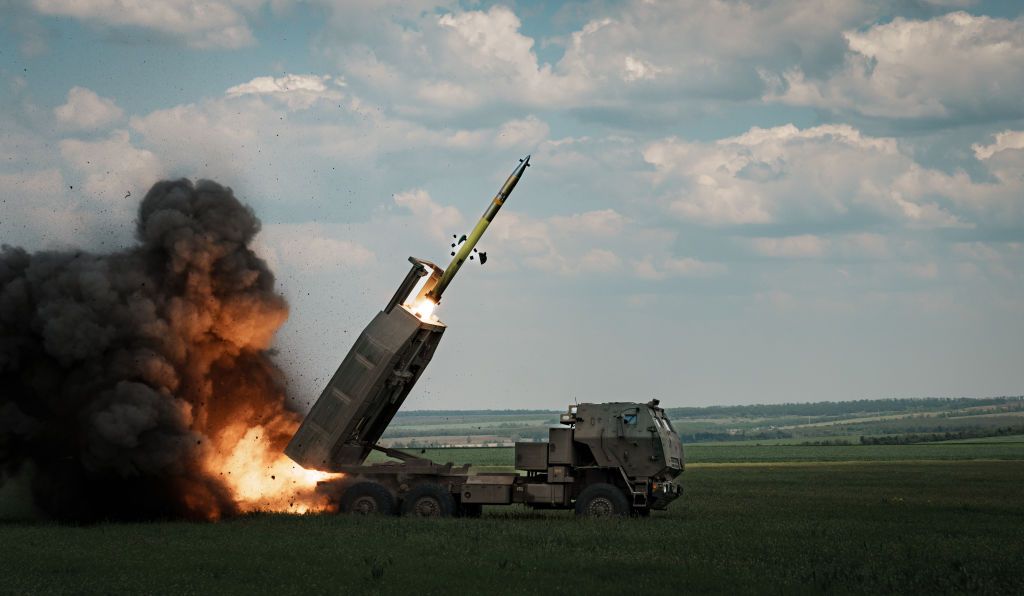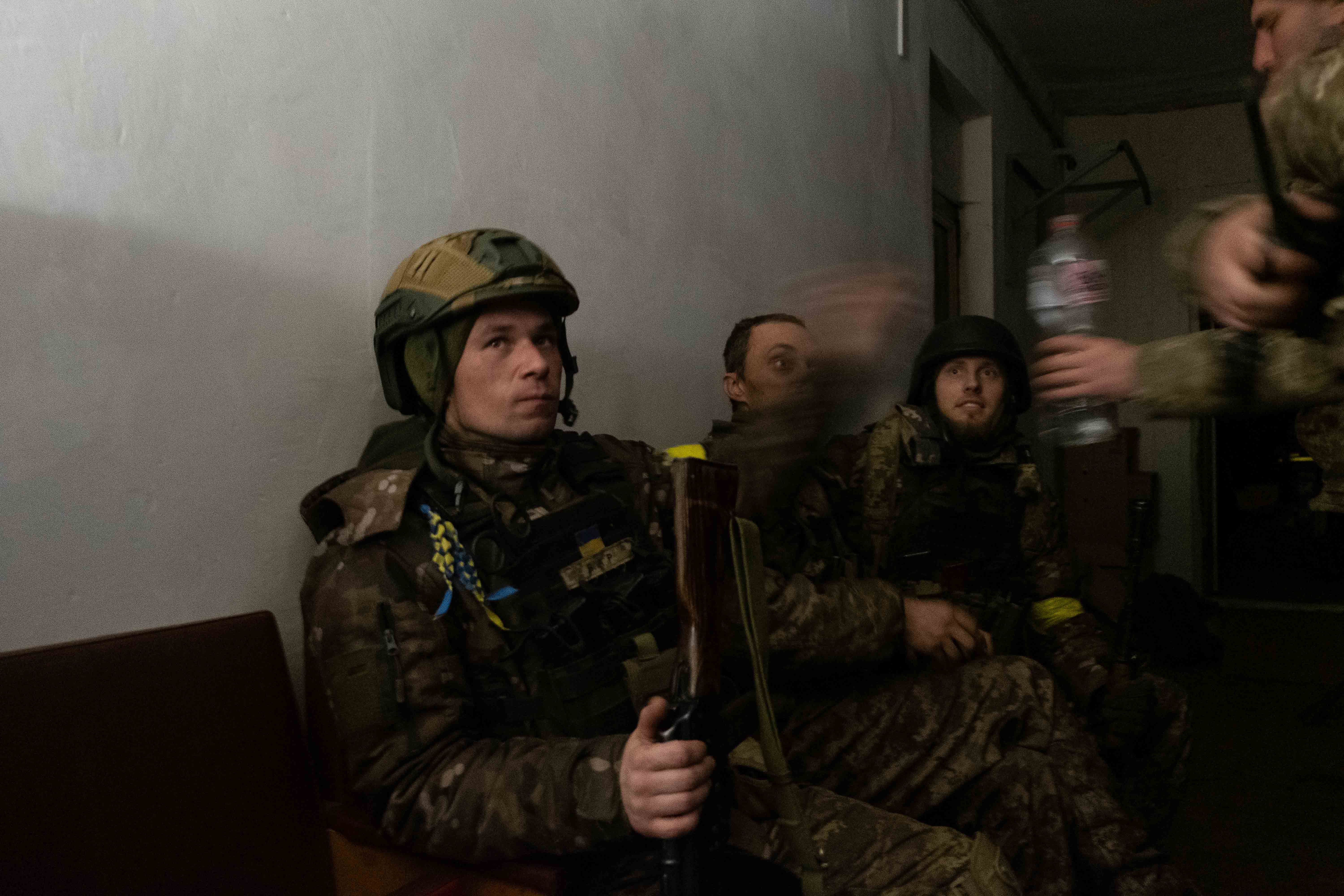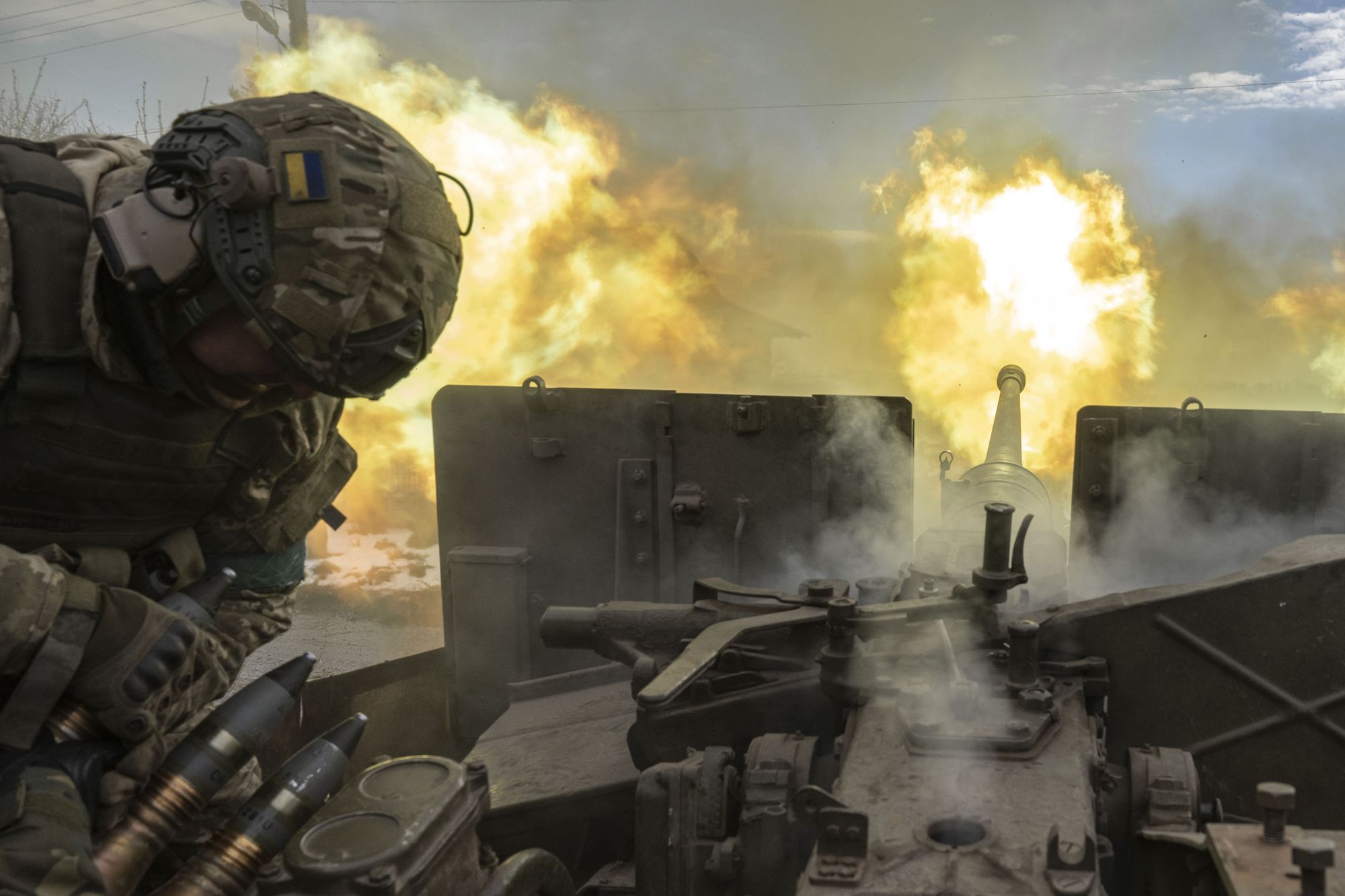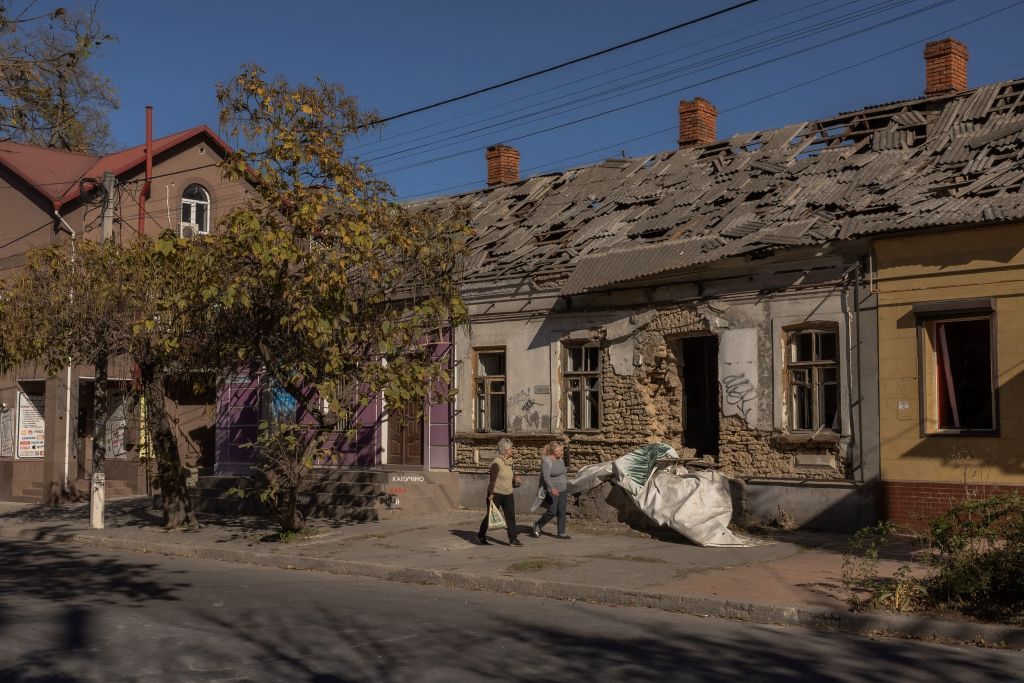Ukraine war latest: Zelensky visits Kharkiv, Zaporizhzhia oblasts as harsh winter looms on front line
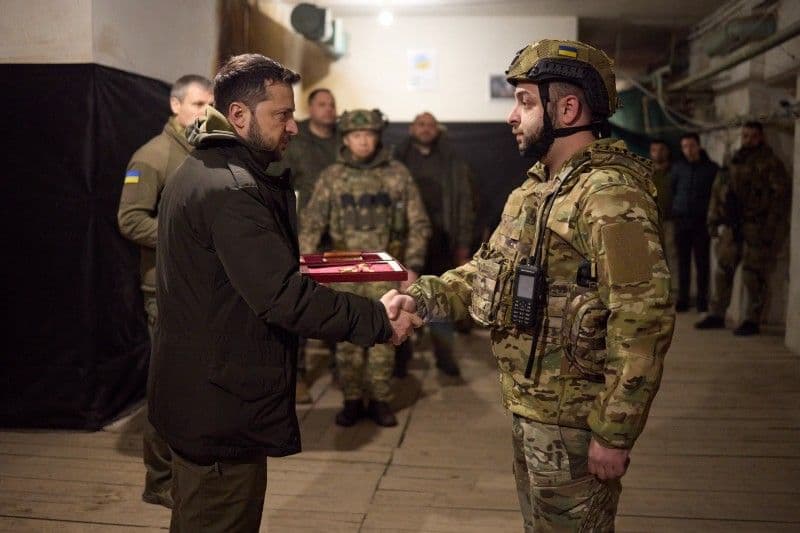
Key developments on Nov. 30:
- Zelensky, Umerov visit military command post in Kupiansk
- Zelensky travels to Zaporizhzhia, holds meeting on fortifications
- Russian attacks on Donetsk, Kherson oblasts kill 3, injure 12
- Von der Leyen: 480,000 EU-made shells delivered or on the way to Ukraine
- Ukrainian military intelligence reportedly broadcasts Zelensky's speech in Crimea
President Volodymyr Zelensky and Defense Minister Rustem Umerov visited a military command post on the Kupiansk front amid Russia's ongoing offensive against the northeastern city, the Presidential Office reported on Nov. 30.
Zelensky and Umerov met Ground Forces Commander Oleksandr Syrskyi, who briefed them on the operational situation in the area and clarified his plan for further defense of the Kupiansk-Lyman axis, according to Zelensky's office.
Syrskyi heads Ukraine's military operations in the east.
Zelensky and Umerov also reportedly met with other commanders leading the Ukrainian defense near Kupiansk.
They discussed soldiers' urgent needs, including electronic warfare equipment, drones, protection against Russian drones, and strengthening fortifications.
"I know that you are losing close people, your brothers in arms, every day. Everyone understands that this is the highest price. Therefore, I am asking you to protect yourself, protect the soldiers who fight alongside you every day," the president told soldiers during his visit.
"I wish you victory, be strong, do not lose the initiative, and defend Kharkiv Oblast, Kupiansk, every village, every square meter of our land."
Russia has been concentrating its forces around Kupiansk since mid-July, trying to regain the positions lost during the Ukrainian surprise counteroffensive in Kharkiv Oblast last autumn.
Kupiansk, around 100 kilometers east of Kharkiv, was occupied by Russian forces from Feb. 27 to Sept. 10, 2022.
Zelensky travels to Zaporizhzhia, holds meeting on fortifications
During his work trip to Zaporizhzhia, President Volodymyr Zelensky held a meeting on building fortifications "on main defensive lines" and in regions bordering Russia and Belarus, the President's Office reported on Nov. 30.
In Zaporizhzhia, Zelensky met General Oleksandr Tarnavskyi, the commander of the Tavria Group, who leads operations on the southeastern front lines, and other commanders fighting in the area.
They discussed the situation on the battlefield and further defense plans while Zelensky presented soldiers with state awards.
The president also talked to local officials, discussing the situation in the region and building bomb shelters in Zaporizhzhia's schools.
Zelensky, Umerov, and other military officials also discussed the construction of fortifications near Avdiivka and Marinka in Donetsk Oblast.
The meeting's participants focused on attracting funding and resources for such construction, including potential cooperation with private businesses, according to Zelensky's office.
Von der Leyen: 480,000 EU-made shells delivered or on the way to Ukraine
As part of the European Union’s ammunition procurement program, 480,000 artillery shells “have been either delivered (to Ukraine) or are in the pipeline,” European Commission President Ursula von der Leyen said on Nov. 30.
The EU will be able to produce one million ammunition rounds per year starting from 2024, von der Leyen added, speaking at the European Defense Agency’s annual conference.
“This would have been unimaginable just two years ago. And it already marks a massive step forward for our defense cooperation.”
Russia's war against Ukraine has demonstrated that the EU’s defense industry must produce more not only to meet Ukraine’s needs but also to cater to its own deterrence and defense system, von der Leyen said.
“The war in Ukraine consumes more hardware than any other war in recent history. Russia has fired 10 million shells in a year. Ukraine consumes 10,000 drones per month. This means that the European defense industry must mobilize too,” she told European defense officials, lawmakers, and industry representatives.
“The reality is that we didn’t have sufficient ammunition and weapons available. No large stocks and a lack of spare capacity. Because in peacetime, we thought we didn't need them. This needed to change.”
According to von der Leyen, the European Commission will present a new ‘European Defence Industrial Strategy’ early next year.
European and Ukrainian officials acknowledged earlier this month that the EU was behind schedule to deliver a million artillery shells to Ukraine. According to a plan approved in March, the bloc aimed to do it within one year.
Ukraine's Foreign Minister Dmytro Kuleba blamed “the poor state of the European defense industry” for the delay.
The bloc's plan to ramp up shell production to boost Ukraine's artillery capabilities has been plagued by bureaucracy and protectionism of individual countries, an investigation by the Kyiv Independent and its partners revealed.
Ukraine's need for munition supplies becomes ever more pressing as Russia is boosting its defense budget for 2024 and was reportedly able to secure over one million shells from North Korea, while political infighting in Washington causes cutbacks in U.S. military support for Kyiv.
Russian attacks on Donetsk, Kherson oblasts kill 3, injure 12
Russian forces struck multiple settlements in Kherson and Donetsk oblasts on Nov. 30, killing three people and wounding another 12, the regional authorities reported.
Russian troops dropped two aerial bombs on a residential area in Donetsk Oblast’s Toretsk at around 5:40 p.m. local time, according to the regional prosecutor’s office.
A 49-year-old resident was killed on the scene while three more civilians aged between 44 and 87 suffered various injuries and were hospitalized, the prosecutors wrote.
In the morning, Russia hit Toretsk presumably with mortars, causing injuries to three residents who came to an administrative building to receive humanitarian aid, the Donetsk Oblast Prosecutor’s Office said earlier.
An 86-year-old woman and two men aged 63 and 34 were reportedly hospitalized with shrapnel wounds, with the latter being in severe condition.
In the latest reported attack on Kherson Oblast, three elderly residents of Tiahynka, around 40 kilometers east of Kherson, sustained injuries of various severity, according to the regional administration.
Earlier the same day, a Russian drone strike on an administrative building in Beryslav wounded two men aged 22 and 37, the Kherson Oblast authorities said on Telegram.
Sadove near Kherson came under a repeated Russian attack at around 2 p.m. local time, resulting in the deaths of two men, the authorities said, after an earlier Russian attack on the village reportedly killed a 59-year-old woman.
At about 9:30 a.m., Russian troops targeted Kherson, leaving a 71-year-old resident with chest and face injuries, the regional administration reported.
Ukrainian military intelligence reportedly broadcast Zelensky speech in Crimea
The Ukrainian military intelligence (HUR) orchestrated the hacking of television channels in Crimea to broadcast a speech by President Volodymyr Zelensky on the evening of Nov. 29, multiple Ukrainian media outlets reported on Nov. 30.
Zelensky's evening address from Oct. 24, during which he addressed "all our people in Crimea," was broadcast on Russian channels in Crimea at around 9:30 p.m. local time on Nov. 29.
"All of you feel that the Russian presence on our land is not permanent. I know this. Ukraine will reclaim its territory and its people. We will not leave anyone to the occupiers."
Ukraine will soon have fire control capabilities over Russian-occupied Crimea, Zelensky said.
Speeches by Ukraine's chief commander, General Valerii Zaluzhnyi, and Military Intelligence Chief Kyrylo Budanov were also broadcast before the screen turned black.
Some locals then reported on social media that the names of all television channels had been replaced with a popular obscenity that uses Putin's name.
A spokesperson of the Russian-installed proxy authorities in Crimea also said that some Crimean internet providers had also been hacked.
Ukrainian media outlets Suspilne and Ukrainska Pravda said that the television hack was part of a long-term operation against the Russian occupation of Crimea, citing unnamed sources in intelligence.



